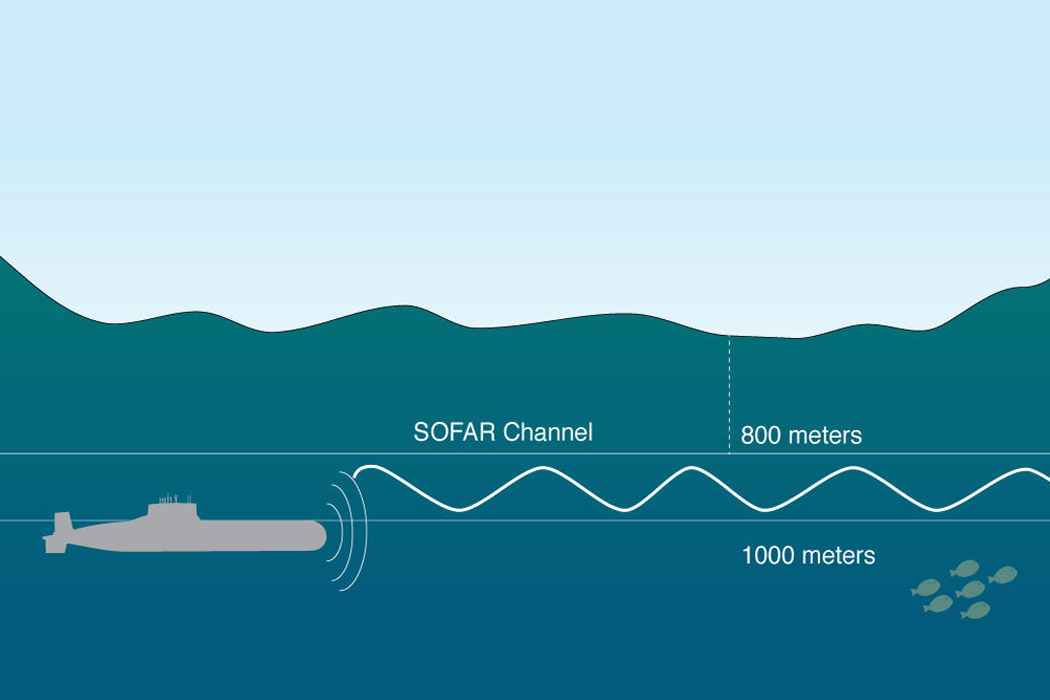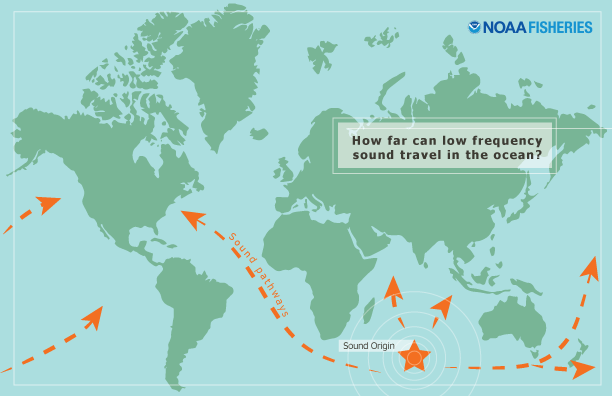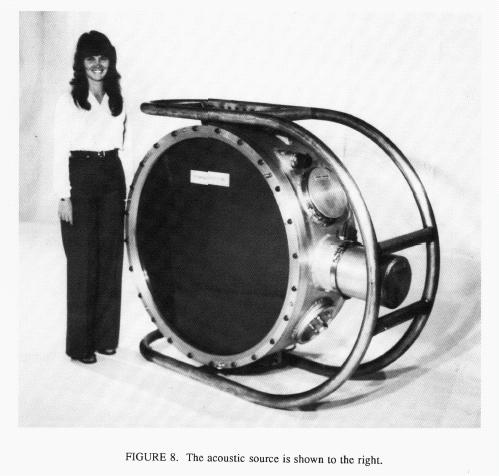
+ Welcome to Soundfly! We help curious musicians meet their goals with creative online courses. Whatever you want to learn, whenever you need to learn it. Subscribe now to start learning on the ’Fly.
By Stephen Chen
Bad news: It’s 1945, you’re a Navy pilot and you just crash-landed your bomber into the middle of the ocean. You’re 1,500 miles away from the nearest coastline, no ships in sight, and you’re alone in a raft watching your aircraft sink beneath the Pacific. So reach into your pocket, grab a bottle opener, and crack open a nice cold… bomb?
Yes, while some of us might want to enjoy one last beer, American pilots during WWII were trained to use their bottle opener to activate a small time-bomb that would send a signal for rescue, even when stranded thousands of miles away. How could just four pounds of TNT send a distress signal over thousands of miles, much farther than a handheld radio?
The answer lies in a layer of water stretching underneath the ocean’s surface in every direction, called the SOFAR Channel. Here, sounds can be heard halfway around the world thanks to the peculiarities of underwater acoustics.
You may be somewhat familiar with the concept of the “speed of sound.” It’s most evident when watching a band play at an outdoor festival, watching a musician hit a drum only to hear that note a second later — the sound actually takes time to travel through the air before it reaches your ears. But that speed isn’t constant; instead, it’s influenced by the physical properties of the medium, or substance through which it passes, be that air, water, rubber, metal, etc. Even within a single medium, factors like temperature and pressure have noticeable effects on speed. To be specific, hot water transmits sound faster than cold water; high-pressure water transmits sound faster than low-pressure water.
How Deep is the Ocean?
Now here’s where it gets interesting: Since the water pressure of the ocean increases with depth, we would expect sound to speed up the deeper we go. But at the same time, the ocean’s temperature decreases as we get farther away from the Sun’s warmth on the surface. Since cold water slows down sound, how does the slowing due to temperature loss interact with the simultaneous quickening due to pressure increase?
Taken altogether, we find that those two factors clash right about where the Sun’s warming effect starts to drop off sharply, right around 1,000 meters below the surface. At the surface, sound travels at a brisk ~1,530 m/s, and starts to slow down as we go deeper. Right at this critical depth of 1,000 meters, sound gets as slow as ~1,500 m/s, but then starts to speed up again as we keep diving to the ocean floor.
So why, if sound travels slower at that depth, would you (the bomber pilot, remember?) want to explode your time-bomb anywhere other than the surface, where the speed of sound is quicker? First, obviously you wouldn’t want to blow yourself up. But the other reason is that this particular depth at which sound travels slowest — 1,000 meters deep — engages a curious property of sound that enables sound waves to travel incredibly far distances without losing energy.
Pink Floyd and the Dark Side of the Ocean
We’ve all seen the image of light entering a prism and exiting as a rainbow. That’s a demonstration of refraction, or how waves (light, sound, or otherwise) change direction when passing into a slower medium. Think of driving a car and slowly drifting off the paved highway into the dirt. As the right side of the car enters the dirt, it slows down on that side; but with your left two wheels still on the pavement, chugging along at the original, faster speed, your car will start to angle more and more severely into the dirt.
Eventually, you’ll leave the pavement altogether, and facing a different direction than you started. That’s the essence of refraction, and sound waves, too, slowly curve in the direction of slower speed, as if they were all being beckoned by this magical channel of water.

Most of the sound waves that intersect the SOFAR Channel manage to exit out the other side, eventually hitting either the surface or the sea floor where they’re absorbed. But sound waves that enter the channel at a flat enough angle (under +/-12º) get trapped inside, careening back and forth between the top and bottom boundaries of the channel, never hitting the surface nor the seafloor. That’s how our well-timed rescue bomb manages to transmit a sound for thousands of miles in every cardinal direction, and we better hope that somebody is listening at 1,000 meters down.
Talking to the Whole World
The aptly-named Heard Island experiment in 1991 tested this principle and pushed it to the limit, letting off an underwater noise near a remote Australian island which was picked up by hydrophones (underwater microphones) 1,000 meters below the surface on both coasts of the United States. That’s almost half the circumference of the entire Earth!

It was an obnoxiously loud subwoofer that annoyed whales all over the planet.
The experimenters brought along marine biologists as well — that’s because far prior to scientists discovering the existence of the SOFAR Channel in the 1940s, whales have been diving down to this depth since time immemorial to sing their songs and communicate to each other. It’s theorized that, before humanity introduced noise pollution to the ocean, whales could communicate to each other from pole to pole.
Indeed, stationing a hydrophone allows one to hear whale calls, like this one off the coast of Monterey Bay.
Notice the interesting delay/echo effect; you’re actually hearing off-axis sound waves that took a more extreme zig-zag route through the channel and arrived at the hydrophone slightly later than the direct signal. That’s an extreme way to create an analog delay!
There have also been other loud, mysterious underwater sound signatures like the Bloop that hint at undiscovered, massively loud sea organisms somewhere out there.
Other Fascinating Uses of the SOFAR Channel
Does a similar sound-transmission channel exist in the atmosphere? The US Air Force, of course, tried to study this in the 1940s with the top-secret “Project Mogul,” one failed test of which was responsible for the Roswell UFO incident (or so they say). Regardless of whether these sound-transmission channels have given us evidence of aliens and/or undiscovered sea monsters, it’s incredible to think that by simply diving a few miles below the surface, you can suddenly listen to the whole world.

Want to get all of Soundfly’s premium online courses for a low monthly cost?
Subscribe to get unlimited access to all of our course content, an invitation to join our members-only Slack community forum, exclusive perks from partner brands, and massive discounts on personalized mentor sessions for guided learning. Learn what you want, whenever you want, with total freedom.
—
 Stephen Rodes Chen is a saxophonist and producer based in Brooklyn NY. He plays saxophone in San Fermin, Ghost Funk Orchestra, and leads his own experimental-pop band Behaviorist.
Stephen Rodes Chen is a saxophonist and producer based in Brooklyn NY. He plays saxophone in San Fermin, Ghost Funk Orchestra, and leads his own experimental-pop band Behaviorist.





